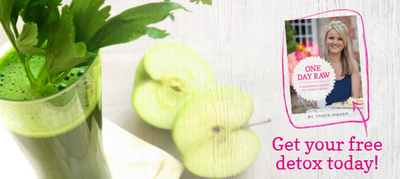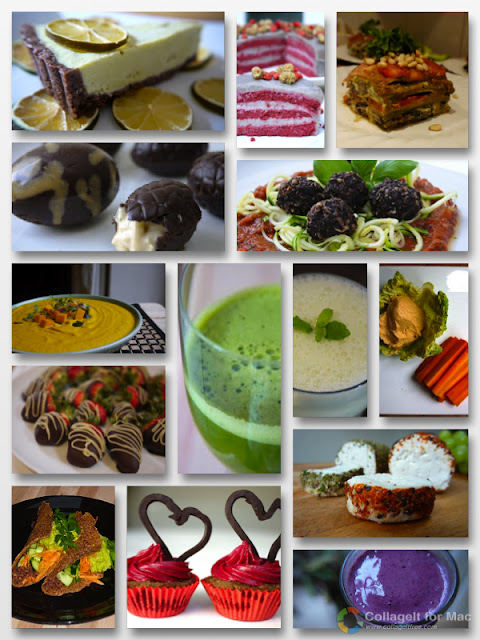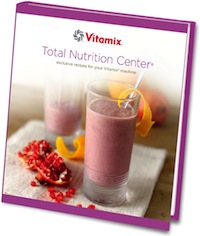Today you guys are in for a real treat. Not one you might physically taste, but one you should feel. This treat of an interview with an incredible lady is bound to amaze and inspire...
Fiona Jeffrey’s story of determination certainly had a big impact on me, as I had the honour to be her wellness coach while she trained for an event, which was going to change her life. She competed in an unthinkable 100 mile race (that's 161 kilometres peeps!), running non stop for 36 painful hours including two dark and stormy nights, all through steep and rugged Cornish hills, bleeding popped toe nails, agonising knee injury and overwhelming mind chatter. She did this being 100% vegetarian and mostly raw.
I knew I was going to love working with this incredible human being, who humbly refers to herself as the 'most ordinary person'. That’s the only thing we don’t agree on however. And as I interview Fiona today, I hope you will see just what I mean...
Tanya: A lot has changed for you since you took up running. Could you share with us a little about your previous diet and lifestyle? Fiona: 'Peaks and troughs' is probably the best description of my old lifestyle – sometimes very healthy, sometimes ridiculously unhealthy! In my 20s and early 30s, I spent a lot of time partying - lots of drinking, eating junk food, not getting enough sleep, not getting enough exercise, smoking (I always called myself a 'social smoker' as that didn't seem so bad to me, but because I was always out socialising, I could smoke a heck of a lot! I only quit completely 5 years ago!) I'd do that for a while, then get bored of it, so turn to fitness and healthy living, which I really enjoyed. After a while though, I'd slowly fall back into my old, 'bad habit' ways. When you've grown up living a certain way and you're surrounded by friends who are all doing the same thing, it takes a big effort to stop and make changes that stick.
Tanya: How long have you been running and what’s been your longest run prior to the most recent 100 miles?
Fiona: I've been running a little ever since school. Maybe one or or two miles a week. I'd always dreamed of doing a marathon before I reached 30... but at 34 years old, I still hadn't got around to it. Realising time was slipping past, I became annoyed and decided to quit making excuses and finally train for one. I got my distance up to 12 miles and then picked up an injury and had to stop. I tried marathon training again a year later and the same thing happened. For a few years after, I went back to running once or twice a week, 3 miles at most. I thought that I just wasn't supposed to run long distance and that my body wasn't up to it! Yet another couple of years went by and I got frustrated with myself that I still hadn't achieved my marathon goal! So, this time I signed up for a 50 mile race! I was fast approaching 40 and I needed to take drastic action! I knew if I trained seriously for a 50 miler, even if I couldn't run 50, there would be a good chance I would manage 26.2 miles and finally be able to cross that dream of running a marathon off my list! My friends say that is crazy logic, but it's how my mind works - I thrive best when I throw myself in at the deep end! Shoot for the moon and land yourself a star, right?!
Tanya: What made you enroll in a 100 mile race? Fiona: I wasn't expecting how I would feel after the 50 mile race. I thought I'd feel a sense of achievement, but instead, I felt disappointed. I'd loved every second of the training and the race, but something was missing. I'd heard so much about the huge mental challenge of running ultras, yet I hadn't come across that whilst running the 50. I'd been looking forward to discovering what kind of person I would be in such a difficult situation and how I would handle it. But, I finished the 50 miler in good shape and felt let down that it hadn't been tougher. So, I found a race that was twice the distance and seven times the ascent of the 50 - signing up for the 100 miler scared the living daylights out of me and I found training hard... so, I knew I'd found myself the mental challenge I was looking for!
Tanya: What challenges have you faced during training?
Fiona: The challenges change every week. At the start of training, I was ill and getting tests for a gland problem. So, I had to push myself hard to get started on training. After a few months (once I felt better), I thought things would get easier, but that's when the challenges started coming thick and fast! Self-doubt, fear, loneliness, resistance from some loved ones, staying motivated to train every day, staying injury free, maintenance and self-care after training (which took up more time than I'd first imagined), physical pain, fatigue, mental boredom, having to push myself when all I wanted to do was quit... it was all going on! One of the hardest challenges, was breaking free from a lifetime of habits, conditioning and beliefs, particularly related to diet. The food side was all relatively new to me, so I had (and still have!) a lot to learn.
Tanya: You ran on a 100% vegetarian and a high raw vegan diet, how long have you been eating this way and what made you choose it?
Fiona: I've been fully vegetarian for a year and a half (having occasionally been vegetarian or vegan for the last 8 years) and discovered raw food about 2 years ago. I came across the benefits of vegetarian and vegan diets 8 years ago when I became extremely sick and tired. I was going between the doctor and hospital for tests and nobody could diagnose what was wrong with me. I was lined up for another set of hospital tests and suddenly became really angry and frustrated. I felt that another 3 months could go by of being poked and prodded and I would be none the wiser about what was wrong. I couldn't stand being so sick for a single day longer. I realised I had to take my health into my own hands, so I started to search the internet and read all sorts of health books. It wasn't long before I discovered the health and diet connection and began to implement some of the recommended changes - cutting out alcohol, caffeine, processed foods, animal products, etc. Six months later, I was completely cured of whatever I'd had. I still don't know what was wrong with me, but now, any time I am sick or feel tired, the first thing I do is look at what I've been eating as a possible factor.
Tanya: How do you feel your veggie diet supports your active lifestyle? Does it have a connection to your performance? Fiona: I love this question! This is such a personal thing and always sparks great debates! All I can say is, for me, there is NO doubt that being vegetarian has improved my ability to train harder and achieve more. I have more energy, I recover faster and I generally, all-round feel so much lighter and better for it.
Tanya: What is a startling nutritional fact, which you learned during your training?
Fiona: There are so many, it's hard to pick one! One of the most recent, important discoveries I made was that certain foods can worsen inflammation and other foods can ease it. Similarly, certain foods can make pain MUCH worse! I went through a stage of craving processed, sugary foods and at the same time, I had a really bad knee injury. For days, I couldn't sleep at night, the pain was so bad. I discovered that sugar increases sensitivity to pain and in a fit of desperation, I cut refined sugar completely out of my diet. Immediately, the pain halved... I'd even go so far as to say it reduced the pain by about 75%. It was a huge realisation for me! I KNOW I'm not "supposed" to eat cake and sweet stuff, but I didn't think it mattered, as the rest of my diet is generally balanced! It really makes me laugh now, in hindsight, how much of my suffering was self-inflicted (that darn chocolate cake!)
Tanya: I know how you’ve been eating, but can you give everyone else an example of what your typical daily meal plan looks like?
Fiona: A typical meal plan looks different depending on where I am with training. When the chips are down and training is tough, I naturally gravitate to a more raw, very healthy diet. I find I can't get through training (and everything else I need to do) without eating as 'cleanly' as I can. When not training, I still have lapses when I go back to my old lifestyle ways - I'll have a few drinks, eat some junk... but slowly, I'm moving away from that pull, which feels great! I still have so much to learn and many little changes to implement – but for the moment, this works for me.
When I'm training, I'll have a green smoothie for breakfast.
Mid-morning, I may grab a raw power bar, fruit, or porridge, if I'm still hungry.
At lunchtime, I'll have a big, leafy green salad with raw vegetables and add some kind of cooked or sprouted grain, like quinoa.
Then, dinner is usually cooked, with some raw salad on the side. For example, a spicy chickpea and tomato curry with cashew nut and saffron rice, with a raw cucumber salad.
To drink, I always have one of the following in my hand: green tea, water, coconut water, caffeine-free herbal teas, home-made sports drinks, smoothies.
I also eat raw snacks during my training.
I make sports drinks, gels and power bars from fruits, nuts, seeds, oils, seaweeds and veg and after training, I make sure I get a raw recovery smoothie in asap.
During long races, I'll try and eat more normally, so I add a little cooked food at breakfast, lunch and dinner, with raw snacks in between.
At the moment, I will occasionally add a couple of Vega brand gels and bars during long races, because they're convenient and easy to carry, although ultimately, I'd like to find a way to run completely on home-made food (this is an issue of finding a portable system that works for me!)
Tanya: What about your training schedule? What does a typical day involve?
Fiona: There's not really such a thing as a typical day, which helps keep things interesting! I began by training 5 hours a week, peaking at 21 hours a week one month before the race. I would train 6 days a week and training centred around running (with very long runs at weekends – anything between 20 and 45 miles), speed walking, full-body strength training (geared towards run-specific exercises), cycling and jumping rope. As my race was quite hilly, I had to incorporate a lot of hill training – power walking up hills and running hard down.
Tanya: How do you keep yourself motivated?
Fiona: I have to constantly work on this aspect! I'm always looking for ways to stay motivated, even on the good days, when everything is going well. In fact, especially on the good days – that's when I have the energy to put into it. If I have to search for motivation on a bad day, it's already too late! I stockpile ideas for keeping me on track. I have a really long list of simple things I can do. Everything from measuring progress on charts, setting up a mini reward system (breaking a goal down into steps, rather than one overwhelming goal, then rewarding the achievement of each step), researching mental tricks, watching motivational movies, reading books, compiling a list of inspirational quotes.
As an example, I wrote a list of “Run Rules”. When things get really bad, I look at the list and I know that something on that list will be just what I need to hear that day! The list includes things like, “no beating myself up, no questioning the goal, the only way out is through, no crying, etc...!” That 'no questioning the goal' rule has saved me from quitting sooo many times this year! There's no point deciding to do something as irrational as run 100 miles, then halfway through training, start rationally questioning why you're doing it. It seems ridiculous that just a small reminder like a list can make the difference between success and failure for me, but it does.
Tanya: How do you think coaching helped?
Fiona: Coaching, for me, is one of the keys to success! Getting help has been a huge factor in achieving what I set out to do. The last couple of years, I've made massive changes to my diet and my lifestyle. I had no idea what I was doing when I began, so learning from an understanding, supportive coach who was already doing what I wanted to do, was the fastest way to get to where I wanted to go. When I began, I didn't know anyone else who was eating raw, or running long distance, so I had to consciously seek them out. I'd really recommend coaching to everyone – even if it's just a couple of sessions. The time and energy you save by learning from an expert (as opposed to trying to figure it all out by yourself) pays for the coaching!
Tanya: Tell us a little bit about the race. Did anything shocking or unexpected happen? Did you at any point consider pulling out and what got you through?
Fiona: Due to a really stupid mistake, I had a knee injury going into the race which became a huge problem before I'd even gone 20 miles. So, I was seriously considering quitting at around 20 miles. I was still seriously considering quitting at 50 miles, too (ha ha!) but I'd managed to get that far, thanks to some extraordinary runners (one guy, called Matt, in particular). He mentally got me through to the halfway mark. I wouldn't have done it without him, not least because we kept getting lost and when you've got 100 miles to run, are in absolute agony and have no idea where you are and how to get back on track, mentally you start to lose the plot a bit! Luckily, the spirit out there during an ultra is a positive one and when things go wrong, it starts to all become extremely hilarious, which is one of the reasons I find it so much fun! I was really disappointed and worried about my knee, but once I'd run about 60 miles, something switched inside me – there was no way I was going to quit. In the end, I looked pretty ridiculous, having to crawl backwards down some hills as my knee was completely shot, but I found the upside was that once you get to a certain level of pain, it simply can't get any more painful. Pain has a limit. Once I'd managed to get myself to that stage, everything began to get easier again! Which is when we ran into the worst storm I've ever run in (I do love a British Summer!) The second night of running was crazy – it was freezing cold, blowing a gale, pouring rain (the paths we were running became rivers) and we kept losing the way in the dark. At one stage, the wind was blowing so hard, I couldn't stay on the path. I was getting gusted towards the cliff edge, so crouched down, meaning to put my hand down to steady myself... and in the light of my head torch, I realised there was nowhere to put my hand! I was right at the edge of a 200ft drop! It was like something from a deep space movie – all I could see in my beam was rain and a wide, pitch black expanse of nothing! I was absolutely terrified! From then on, it was a case of really digging deep and pushing myself! My jaw hurt from clenching my teeth so hard, but I was determined I was going to finish... alive!
Tanya: After running 100 miles, what do you now know for sure?
Fiona: We are all capable of so, so much more than we could ever imagine! I used to have many dreams when I was younger, but I never got out there and got around to achieving them. I always thought (or believed when I was told) that they were harebrained, crazy ideas that would never happen! I now know that if you want to do something, all you have to do is just decide what you want to do and get out there and do it! The only thing stopping you, is yourself!
If you'd like to learn about some of the anti-inflammatory tips, home made sports gels, pre and post work-out drinks and energy bars, which Fiona has been having, come to the Lush Escapes 1 Day City Retreat in London: Raw Food & Yoga for Athletes with Tanya Alekseeva and Colby Hanks.


















